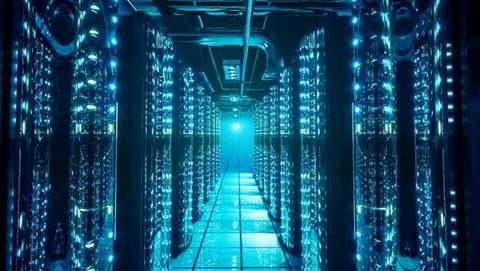The COVID-19 pandemic has changed the behaviour of the world, pushing everyone online. The criticality of data centres and the unrelenting reliance on them across all walks of life became apparent during this period of navigating through this crisis.
This reality will continue to manifest in new ways this year as the data centre and the information ecosystem orbiting it emerge from the pandemic as a fourth utility criticality, complete with all the expectations and responsibilities that implies.
Data centre infrastructure provider Vertiv has identified the following emerging data centre trends for the year.
1. Data Centres acquiring a utility-like status
The noticeable change to utility-like status is reflected by the increasing high expectations for network availability that extends deep into rural and remote areas, as it becomes necessary to increase accessibility to critical applications to more of the population. This will increase pressure on data centres to maintain connectivity even at the outer edges of their network.
Additionally, there would be no distinction between availability and connectivity as the ability to ensure and protect connections across increasingly hybrid networks becomes as much of a requirement as any traditional measure of data centre operations.
2. Digitalisation on fast forward
COVID-19 left a lasting impact on the workforce and the IT ecosystem supporting the new work-from-home model. Vertiv experts believe that the pandemic-motivated investment in IT infrastructure will continue and expand, enabling secure, reliable, and efficient remote work capabilities.
Any steps taken early in the crisis has accelerated, and organisations have embraced these changes as a permanent adjustment to how we work and do business. Over time, what is done in-person versus remotely will change, and the change will be driven by customers looking to minimise their on-site presence. This places a premium on connectivity, remote monitoring, data analytics, and even artificial intelligence to make decisions.
3. Bringing large data centre capabilities to small spaces and the edge
When previously, cost and complexity prevented the implementation of the best practices for data centres in the limited space, this is changing. Vertiv anticipates a continued focus on bringing hyperscale and enterprise-level capabilities to these edge sites.
“Critically serving communities and businesses, alongside electricity, gas and water, data centres will have a utility-like status,” said Tony Gaunt, Senior Director Colocation, Cloud, BFSI Asia & India at Vertiv. “Hyperscale cloud providers are offering organisations across Asia-Pacific the vital flexibility and scalability to manage an everchanging and moving business environment. While remote work was initially mandated due to the pandemic, it has already become a semi-permanent fixture in
many workplaces. The need for low latency connectivity is no longer exclusive to large cities - we need on-the-spot processing at the edge, enabling businesses to be fully operational anywhere.”
4. The 5G conversation turns to energy consumption and efficiency
As countries move to rollout 5G technologies this year – to benefit from its increased bandwidth and latency as well as the applications it will enable – there would be a shift in focus on its significant energy consumption and the strategies needed to deploy more efficiently and effectively. The network densification necessary to fully realise the promise of 5G adds to the increased energy demands, which is estimated to be 3.5x more than 4G. This year will see there being a greater focus on managing this significant increase by exploring more efficient products and practices.
5. Sustainability comes to the forefront
As the proliferation of data centres continues, especially in the hyperscale space, these cloud and colocation provides are faced with increased scrutiny for their energy and water usage. The amplification of the climate change conversation and shifting political winds in the United States and globally will only add to the focus on the data centre industry, which accounts for approximately 1% of global energy consumption. This year will see an increase in innovation focusing on energy efficiency across the data centre ecosystem.
The benefits for data centre operators are clear – cost reduction, compliance with existing and anticipated regulations, and the goodwill that comes with establishing a leadership position in the global sustainability movement. It is important to be privy to innovations across the data centre infrastructure space and especially in the area of thermal management.










